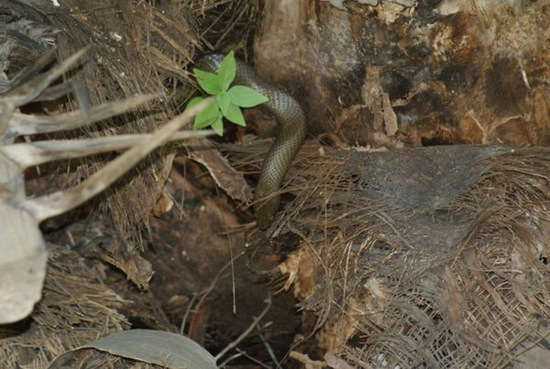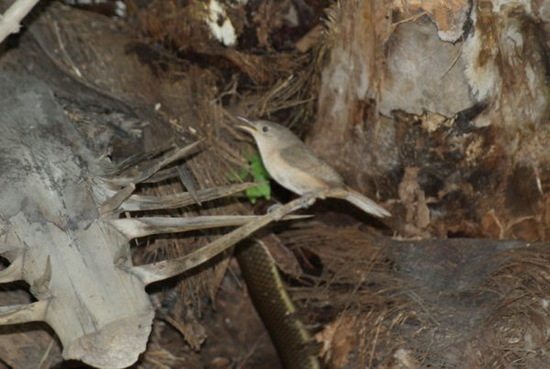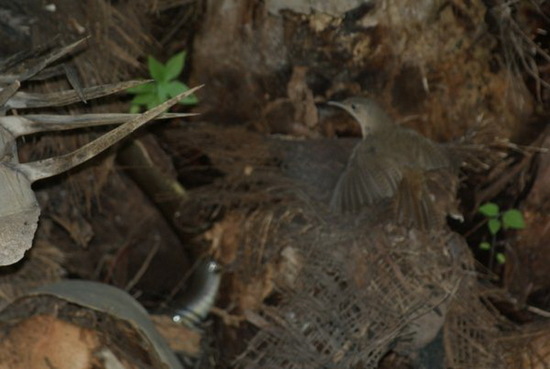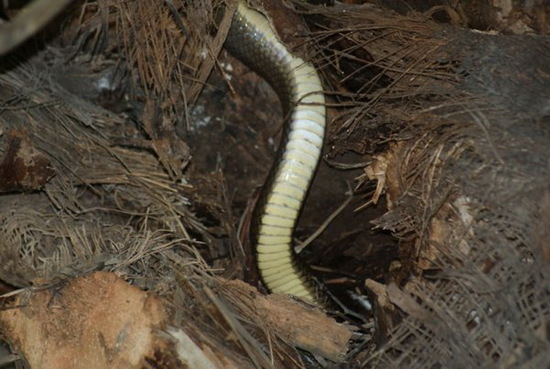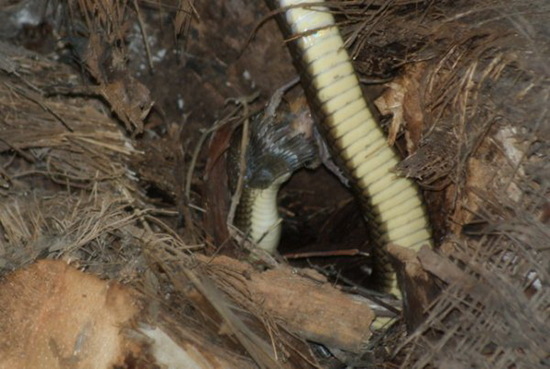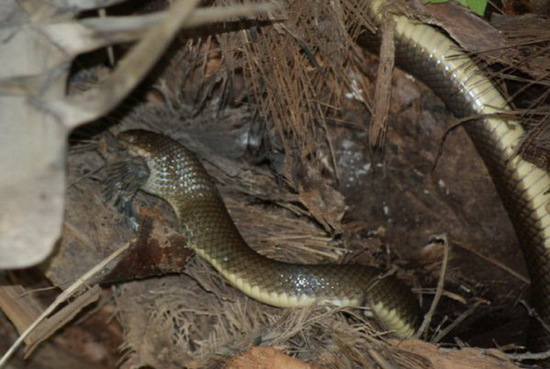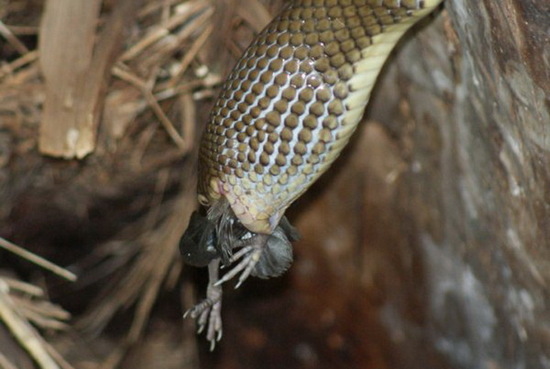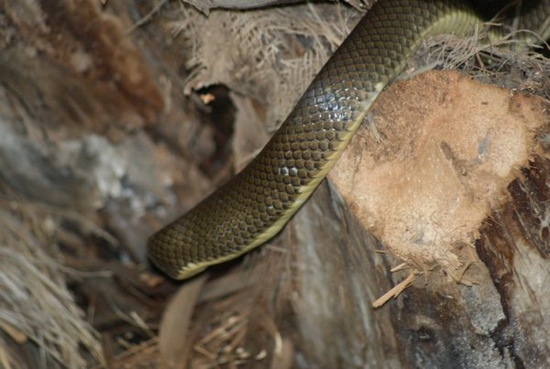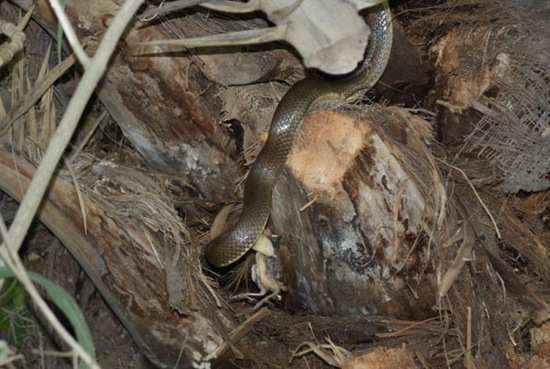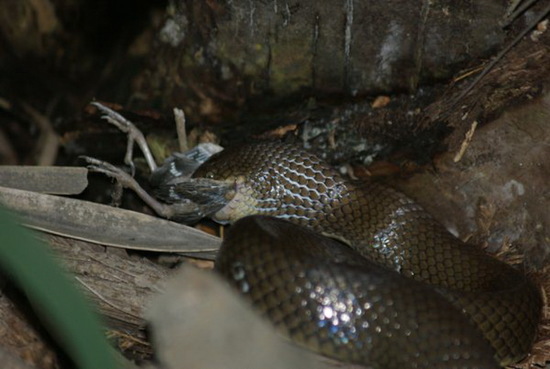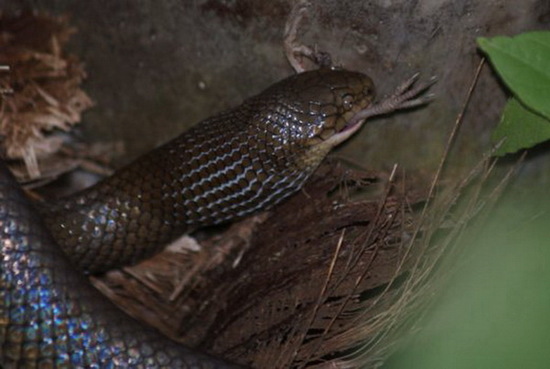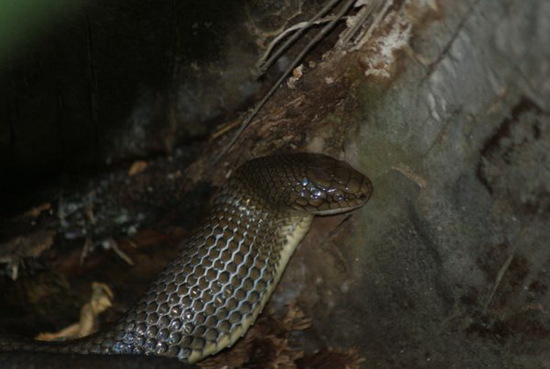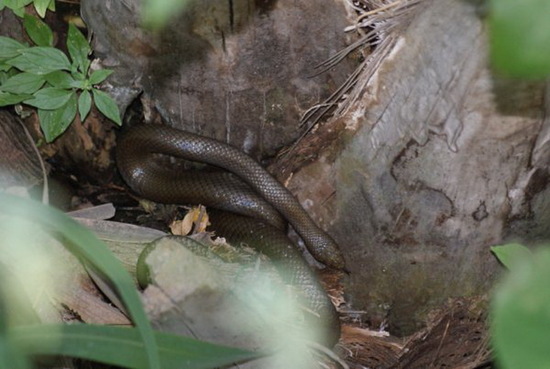Mom and dad courage
Lizard Path - 17/01/10 aprox. 2 p.m.
Story and photos by Claudia and Tito Di Mauro
(Sensitive content)
Story and photos by Claudia and Tito Di Mauro
(Sensitive content)
The real feel of almost 37° were heavier than our knapsacks at the time of our return. They had arrived at 9 a.m. and felt that the streaked flycatcher, the white-winged becard and the rufous-sided crake were the top sightings of the day.
The photography was not doing well. Sometimes the light, sometimes the foliage, other times the constant moving of birds and our own lack of experience conspired against good photographic results.
As we walked back along the Lizard Path from Viamonte to Brasil, some 400 meters away, only the imaginary smell of La Alameda made us follow. Then it happened.
An unusual fuss produced by two house wrens made us stop. The house wrens were flying about a palm by the road desperately emitting strong voices (as we would later interpret) and they rushed to peck at something on the palm.
It was then that Claudia saw it. A brown mussurana Paraphomophis rustica (we name it and we perform the known rite on the left, that you must do when you read it) stuck on the palm received nerveless the repeated attacks of the house wrens.
Suddenly, it began to crawl and the house wrens increased their angry voices and their pecks. Impassive, the aforementioned (we won't mention it again so as not to repeat the rite at any time, since it is not elegant) crawled to the other side of the palm.
The photography was not doing well. Sometimes the light, sometimes the foliage, other times the constant moving of birds and our own lack of experience conspired against good photographic results.
As we walked back along the Lizard Path from Viamonte to Brasil, some 400 meters away, only the imaginary smell of La Alameda made us follow. Then it happened.
An unusual fuss produced by two house wrens made us stop. The house wrens were flying about a palm by the road desperately emitting strong voices (as we would later interpret) and they rushed to peck at something on the palm.
It was then that Claudia saw it. A brown mussurana Paraphomophis rustica (we name it and we perform the known rite on the left, that you must do when you read it) stuck on the palm received nerveless the repeated attacks of the house wrens.
Suddenly, it began to crawl and the house wrens increased their angry voices and their pecks. Impassive, the aforementioned (we won't mention it again so as not to repeat the rite at any time, since it is not elegant) crawled to the other side of the palm.
Naive, unexperienced we celebrated in advance the victory for the house wrens. "The aforementioned is leaving" was our belief and wish. Speeding up it went into a cavity, got out and let itself down exposing its yellowish underparts. Coiling once and again it went deep into another cavity. The house wrens kept carrying out their task but we believe they felt their effort was useless. The aforementioned got out of the cavity with a chick in the mouth, and, following the procedure dictated by nature, it swallowed the chick bit by bit
At this point a dozen of onlookers had gathered and we had to explain what we were watching and photographing in such a shocked state. Claudia, femenine sensitivity anyway, insulted the aforementioned and apologized to the present for her harsh remarks. At the same time, she offered her binoculars to the onlookiers and explained how to use them (meeting the COA's target of spreading the activity of bird watching, though this does not apply in this particular case). In our lifetime of birdwatchers we had never witnessed a situation like this. That is, never on this side of the field. We had observed the juvenile rufescent tiger-heron eat a succulent rat and more than once kestrels savouring the same morsel though with different techniques. But on those occasions we identified ourselves with the eaters. Now we were on the side of the food and of the magnificent house wrens which defended their chicks. "This is Nature and bla, bla bla" did not convince us. We were affectively linked to the house wrens, which to our judgement and feeling, had taken off the vulgar epithet COMMON (This is the epithet they have in the Spanish name).
The aforementioned finished its task and at this point the house wrens seemed to have been defeated. But, it happened again. The aforementioned let itself down into the nest and out it came with another chick repeating the steps of the procedure manual.
The aforementioned finished its task and at this point the house wrens seemed to have been defeated. But, it happened again. The aforementioned let itself down into the nest and out it came with another chick repeating the steps of the procedure manual.
"It is strange. They never eat two preys on a row", said one of the onlookers of the group. Claudia's insults and apologies increased. A woman tried to watch the scene through the binoculars. When she managed to do so after the typical effort of beginners, felt horrified at such a close image that she preferred not to use the device any longer. The COA certainly lost a potential bird watcher.
Once the second dish was finished, the aforementioned crawled to the depth of the palm leaving the two wrens in silence, a dozen of onlookers and two birdwatchers perplexed. We would have preferred to have reached La Alameda with 37° several birds watched and a meager crop of photographs.
We resumed the walk with a marked and ambivalent feeling: on one hand anger and impotence due to the content of the scenes witnessed, too impressive. On the other hand, satisfaction to have experienced simple but sublime acts of nature: the search for food for survival and the obstinate defence of the chicks, though against more powerful enemies.
An another question also popped up: why the chicks waited for their sin in complete silence? Would it be so as not to give away their position? But we also learnt a bittersweet lesson: you should not always expect to observe scenes which awake tenderness like nest building or feeding chicks by parents, though these birdwatchers do prefer them. And we went straight home without stopping at La Alameda. Not even the smell, already in the air, motivated us to get our own food.
Finally go our respect to the NOT COMMON house wrens and a darwinian wish for the aforementioned to bump into the lizard Juancho in the Lizard Path.
Once the second dish was finished, the aforementioned crawled to the depth of the palm leaving the two wrens in silence, a dozen of onlookers and two birdwatchers perplexed. We would have preferred to have reached La Alameda with 37° several birds watched and a meager crop of photographs.
We resumed the walk with a marked and ambivalent feeling: on one hand anger and impotence due to the content of the scenes witnessed, too impressive. On the other hand, satisfaction to have experienced simple but sublime acts of nature: the search for food for survival and the obstinate defence of the chicks, though against more powerful enemies.
An another question also popped up: why the chicks waited for their sin in complete silence? Would it be so as not to give away their position? But we also learnt a bittersweet lesson: you should not always expect to observe scenes which awake tenderness like nest building or feeding chicks by parents, though these birdwatchers do prefer them. And we went straight home without stopping at La Alameda. Not even the smell, already in the air, motivated us to get our own food.
Finally go our respect to the NOT COMMON house wrens and a darwinian wish for the aforementioned to bump into the lizard Juancho in the Lizard Path.


